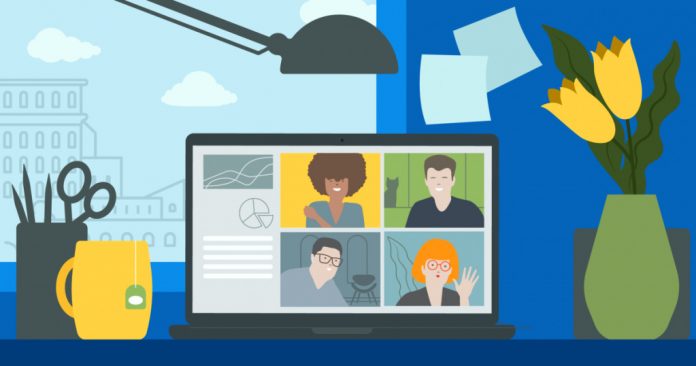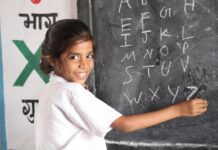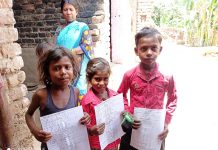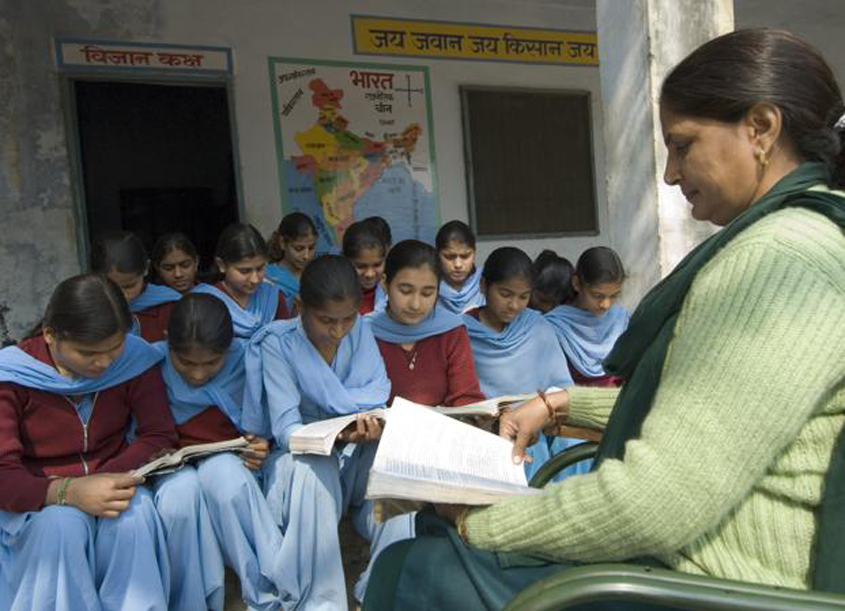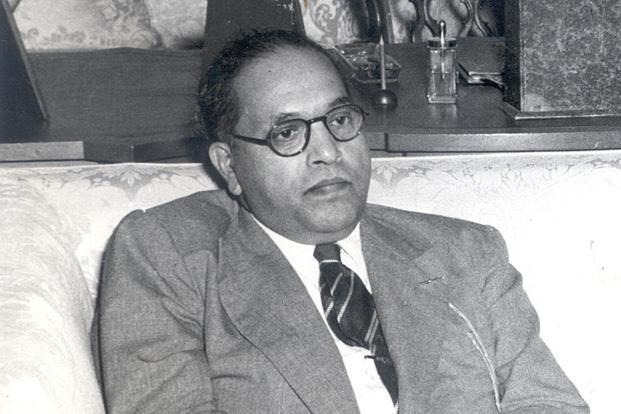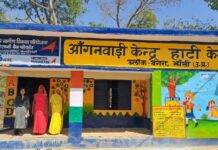It is perhaps one of the greatest paradoxes of our times that we are unable to provide an access to quality education and learning to students from across socio-economic backgrounds and that even after seventy years of gaining independence, people’s access to educational opportunities are still shaped by class or financial position.
This gigantic gap between educational opportunities experienced by the rich and the poor, those having access to expensive and lavishly endowed private schools and those who hardly have access to even quality teachers or a well-lit classroom, let alone books, infrastructure and additional opportunities.
The coronavirus pandemic led to a closure of schools so that the spread of infection among children could be prevented but as schools retreated from the physicality of the classrooms, there was a massive and almost sudden shift to the digital mode of education.
The digitalisation of the classroom has in turn deepened the divide between the rich and the poor, the private and the public schools across India. This fact becomes all the more clear if we consider the latest survey that has been conducted by Oxfam India.
The survey conducted by Oxfam India spans five states of India and tries to underline the extent to which the digitalisation of educational has deepened the educational divide in the country. The study tells us that more than 80% of parents who have their children enrolled in government schools feel that such schools failed to deliver or did not deliver education to them amid the pandemic and especially since the lockdown.
The state of Bihar saw the highest degree of angst among parents, where 100% said that education wasn’t delivered at all to their children amid the coronavirus pandemic.
Inaccessibility to Electronic Devices: A Major Concern
While familial income and affordability determines the educational fortunes of a child and determines which school, the parents can afford to send their child to, access to electronic gadgets and internet connectivity determines whether children can have access to digitalised education.
While private schools that generally cater to a more wealthy and well-off clientele faced lesser problems in disseminating education through the digital medium because such homes generally have access to smartphones or computers for children to be able to make use of digitalised learning resources, such is not necessarily the case with children of public schools.
The children of public schools often come from extremely marginalised and backward families and may not have access to such technologies. This was the fact that the study by Oxfam found as highly responsible for failure to access digital mediums of education. The study conducted by Oxfam India took into account 1158 parents and 488 teachers across various states of India such as Odisha, Bihar, Jharkhand, Uttar Pradesh and Chhattisgarh. The study was conducted between the months of May and June.
Its Ironic that We Believe that Digital Education is Reaching Every Child
We are made to believe that as find ourselves in a pandemic induced world and are coming to terms with what is often regarded as the “new normal”, we must look at the digitalisation of education as the need of the hour and as something that necessarily benefits children from across the economic spectrum.
But do we know that only 15% of households in India’s rural regions have access to the internet. Dalits, Adivasis and Muslims have a much lesser access to digital devices or the internet compared to other sections of the population. All these facts are indicated by the data produced by the government itself. Even within homes that have access to digital devices or the internet, girls are often deprived from accessing such amenities due to gendered and patriarchal orientations to education .
What Does Digital Education Mean If Children Don’t Have Access to Textbooks?
Children ought to have access to textbooks as critical learning material so that even when they don’t have access to external support, they can at least read on their own. But 80% of parents whom Oxfam has surveyed said that let alone access to digital education, their children didn’t even have access to textbooks. In the absence of textbooks, lack of digital devices to access online education- such children are completely on the receiving end and have been quite literally missing out on their education. The survey reminds us that access to textbooks is still a luxury in India and 80% of the parents who were surveyed reported that their children hadn’t got access to textbooks.
With schools being closed for prolonged periods of time and widespread lack of access to digital technologies and internet connectivity to access online education, a large chunk of children in public schools have seen a major blow as far as their access to education is concerned.
Schools have been shut in India since March and online classes began in many schools in June. While children in private schools did have access to online education if not actual classrooms, children in public schools missed out on both.
No School Means No Study, No Mid-Day Meal or Additional Entitlements
While not having access to school means a disconnect with education for most students in public schools, it also means that children have no access to mid-day meals and additional entitlements that schools have the responsibility of disseminating to children.
In a country where mid-day meals provide more than a lifeline to students from marginalised and poor backgrounds, the absence of such meals means vulnerability to hunger and malnutrition for a large section of such children.
The SC highlighted the need for states to make sure that even while the schools were closed, mid-day meals/dry ration supplies reached to children. But the survey is proof enough of the fact that more than 35% of the children had no access to mid-day meals since the schools closed.
Interestingly, 59% parents whose children studied in private schools also said that the coronavirus pandemic had led to the non-delivery of education. So it wouldn’t be incorrect to say that dissemination of education in both public as well as private schools was impacted although public schools faced the larger part of the blow.
A recent report by the UN is suggestive of the fact that 24 million children across the world have been impacted by the educational fallouts of the pandemic.
It has also been estimated that 320 million children in India have been impacted by closure of schools and the resultant deprivation of children from mid-day meals and other facilities that the school is supposed to provide.
With Prolonged Closure of Schools, A Bulk of Students May Never Return to the Classroom
The study by Oxfam is extremely significant because it reminds us that while it may be true that children are missing out on their educational opportunities amid the pandemic, what is frightening is that a bulk of such children may never return back to the classrooms. Children who are unlikely to return to the classroom are likely to begin work as part of the informal economy and may engage in child labour.
Young girls who are compelled to discontinue their schooling may be forced into early marriage or into trafficking.
It is ironic that while we look at digitalisation of education as a solution to the prolonged closure of schools amid the pandemic, the real issues are far deeper and serious.
The Problem of Reducing Online Education to WhatsApp Calls and Messaging
It is not as if children are benefiting extremely from online education in cases where it is taking place. The survey reveals that even in instances where online education is taking place, there are chances that it is not effective and has been reduced to WhatsApp calls and messages between the teacher and the student. For 75% of children in both private and public schools, WhatsApp was the primary means of disseminating education among children. Children in Jharkhand reported the greatest difficulty in accessing online education due to poor internet connectivity and therefore issues in accessing WhatsApp.
Inaccessibility to devices was the primary cause of concern for parents of school going children. 80% teachers said that they too were facing problems in accessing the internet and thereby reaching out to students. They also complained that lack of internet access and data expenses were also matters of concern for many among them.
While teachers in all states, especially those teaching in public schools and low cost private schools were facing the biggest issues in accessing the internet and reaching out through online education, those in Uttar Pradesh and Chhattisgarh reported the greatest difficulties.
The second most important problem faced by teachers was non-familiarity with teaching online and over 80% teachers in states like Bihar reported that they were not trained by their institutions or given any orientation about how to teach online and found themselves completely clueless.
One of the important suggestions that most teachers in public schools came up with was that instead of relying on smartphones and laptops/computers or the internet for educational dissemination, a better idea would be to use the radio to impart lessons or reach out to children, although this has not been the dominant practice.
With no books, no access to internet, no support at home and a total lack of connect to the school, children from the marginalised and poor communities who are enrolled particularly in public/government schools are at a complete loss. Education for such children continues to look like a distant dream if not an altogether impossible proposition.

